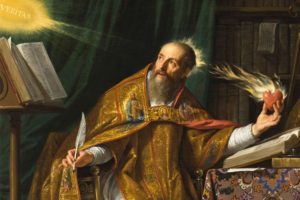We are drawing near to the annual Evangelical Theological Society (ETS) meeting, November 14-16 in Milwaukee, WI. Here is a copy of the schedule. I presume that sessions will be recorded, as they have been in previous years, should you see a lecture that tickles your fancy.
I would covet your prayers for Journeys of Faith panel discussion of which I am part on Wednesday morning (8:30-11:40am). On Thursday at 5:30pm I will deliver a paper titled “Crossing the Tiber: Reasons for Conversion at the Catholic/Protestant Intersection,” looking at the experiences of John Henry Newman (1801-1890) and Peter Martyr Vermigli (1499-1562). Here is my introduction to whet your appetite:
In April of 2009, The Pew Forum on Religion and Public Life released its so called “Faith in Flux” study, analyzing religious affiliation in the US. The study explains that “One in ten American adults is a former Catholic,” half of whom have migrated toward Protestantism. This amounts to over 15 million people. Two-thirds of these former Catholics belong to Evangelical congregations. That is 10 million men and women who used to sing the Ave Maria, who now prefer something closer to Keith and Krysten Getty.
Unfortunately, the Pew Forum does not identify the number of Protestants who have converted to Catholicism. That there are such people swimming the Tiber is evident by a virtual genre of books on the subject. For example, in 1993, a Presbyterian graduate of Gordon-Conwell, Scott Hahn, published Rome Sweet Home: Our Journey to Catholicism. In 1994, Professor Thomas Howard, an evangelical of notable Protestant pedigree, wrote his story, Lead, Kindly Light, My Journey to Rome. Fast forwarding to 2009, Frank Beckwith, while he was the sitting President of the Evangelical Theological Society, wrote Return to Rome: Confessions of an Evangelical Catholic. In 2011, radio host and columnist, Michael Coren wrote, Why Catholics Are Right. And in the same year, Professor Christian Smith of Notre Dame wrote his story in a how-to book titled: How to Go from Being a Good Evangelical to a Committed Catholic in Ninety-Five Difficult Steps.
While there is no evidence to suggest that this movement to Rome is comparable in size to the 10 million former Catholics who have left for evangelicalism, it is, nonetheless, a significant movement. Most of us are acquainted with someone who has traveled this path. Very often they are brothers and sisters, moms and dads, sons and daughters.
Of the many converts to Catholicism during the modern period, the most notable is arguably John Henry Newman, the 19th Century Anglican divine turned Catholic Cardinal, recently beatified by Pope Benedict XVI. Regarded by many as the eminent and most creative English theologian of the 19th century, Newman is remembered in various ways: leader of the Oxford movement, Victorian sage, educational theorist, poet, satirist, preacher, and forerunner of Vatican II. Library shelves around the globe are weighed down by the several hundred volumes dedicated to his life. Perhaps most of all, however, Newman is known as a convert.
It is noteworthy that the title of Tom Howard’s book, Lead Kindly Light, is taken from Newman’s hymn by the same name.
Lead, kindly Light, amid th’encircling gloom, lead Thou me on!
The night is dark, and I am far from home; lead Thou me on!
Keep Thou my feet; I do not ask to see
The distant scene; one step enough for me.Newman’s words were originally penned during his visit to Southern Europe in 1833, when he was far from his English homeland and terribly ill. In retrospect, however, he appears to have described his religious journey, which led him progressively to the Roman Church.
In what follows, we will seek to accomplish three things:
1.) To identify the primary reasons why someone like Newman would convert from Protestantism to Catholicism.
2.) To consider why Newman’s questions might lead someone in the opposite direction, that is, from Rome to evangelicalism. Here we will briefly compare Newman to the 16th Century Catholic convert, Peter Martyr Vermigli.
3.) How do these lessons illuminate today’s experience of conversion among Catholics and Protestants?





